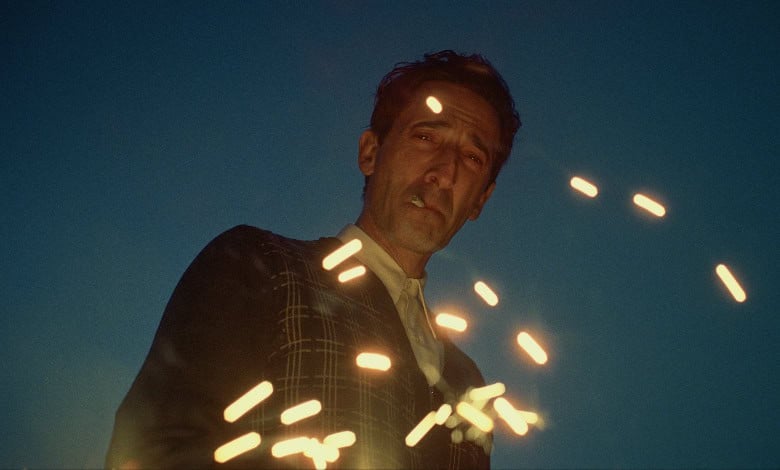Why Hollywood Is Eerily Similar to USAID
Studios squander millions while shrewd filmmakers keep costs uber-low

Brady Corbet didn’t get rich making “The Brutalist.”
The Oscar-nominated film has earned just $31 million globally, and the writer/director claims he didn’t receive a penny for creating the drama.
Let’s put that Hollywood accounting aside.
Corbet made “The Brutalist” for roughly $10 million. That’s not necessarily impressive unless you’ve seen the film. It’s gorgeous, an epic in the old-school sense filled with stunning performances and lavish landscapes.
Oh, and it’s roughly three-and-a-half hours long.
Corbet made every penny count. And he’s the exception to the rule.
It’s why Hollywood bears an unwelcome resemblance to The United States Agency for International Development (USAID), the government division now synonymous with waste thanks to Team DOGE.
Consider “Wolf Man,” the latest attempt to revive the classic horror movie character. The January release flamed out at the box office, but a look at the film suggests it must have cost less than “The Brutalist.”
Much less. Why?
The film is primarily set in a cabin in the woods. A few scenes take place in the neighboring forest. The FX are minimal, to say the least, and the only “name” in the cast is Julia Garner of “Ozark” fame.
The reported budget stands at $25 million. Where did all the money go?
Compare “Wolf Man” to “Godzilla Minus Zero,” 2023’s surprise box office hit. That film cost less than $15 million and has all the bells and whistles of a Hollywood blockbuster. It even won an Oscar for Best Visual Effects.
That’s real bang for your buck.
The same holds for “The Creator.” The 2023 box office disappointment looks as lush as any MCU film, but it carried a dirt-cheap (by Tinsel Town standards) price tag: $80 million. Blame director Gareth Edwards of “Rogue One” fame.
“I’m a bit embarrassed it was $80 million,” Edwards tells Variety. “We should’ve done it for less.”
Meanwhile, critics are teeing off on the “humiliating” FX behind “Captain America: Brave New World,” a film that could have cost Disney up to $380 million after extensive reshoots.
These staggering numbers can’t help but bring USAID to mind. The federal agency, created by President John F. Kennedy to address international poverty and promote democracy across the globe, is under fire from President Donald Trump’s DOGE accountants.
The unofficial Department of Government Efficiency has pulled the USAID curtain back, and what we’re seeing isn’t pretty.
We can poke fun at extreme examples of USAID gone wild, like: “$7.9 million to a project that would teach Sri Lankan journalists to avoid “binary-gendered language.”
It’s better to focus on more concrete criticisms, like this:
As convincingly put by the president of El Salvador, “Most governments don’t want USAID funds flowing into their countries because they understand where much of that money actually ends up … At best, maybe 10 percent of the money reaches real projects that help people in need … Cutting this so-called aid isn’t just beneficial for the United States; it’s also a big win for the rest of the world.”
Both USAID and Hollywood do some good work.
The former helps people in far off lands, leveraging America’s generous spirit. Millions are entertained by the best Hollywood product, from dazzling films like “Dune” to TV-based escapism (“The Bear,” “Landman” and much more).
Each must reign in their exorbitant spending and cut waste for long-term viability.
President Trump tasked Elon Musk to audit USAID and similar government programs. Perhaps Hollywood studios should hire visionaries like Corbet, Edwards and “Godzilla Minus One” director Takashi Yamazaki to do the same for them.
Editor’s Note: It’s a brutal time to be an independent journalist, but it’s never been more necessary given the sorry state of the corporate press. If you’re enjoying Hollywood in Toto, I hope you’ll consider leaving a coin (or two) in our Tip Jar.

Minor correction: DOGE is not “unofficial”. The current administration reorganized and renamed the U.S. Digital Service (which was created by the Obama administration) as the U.S. DOGE Service, thus keeping the USDS abbreviation already in use in numerous government documents. The USDS was set up to develop and deploy more efficient computer systems for the federal government and its mission has been expanded somewhat to include processes and procedures as well as improving overall transparency.
I know nothing about the economics of Hollywood, but an eggs- in- one- basket analysis suggests that making 20 movies for “only” $19 million each might offer a better chance of selling more tickets than one $380 million “blockbuster” that will need to sell 38 million tickets just to break even. Ticket sales of 38 million is a mark only about 300 movies have achieved since 1915, and probably at least a quarter of those were franchises, sequels, prequels and remakes.
Amy time someone is spending high amounts of money for something that should cost a lot less, there’s a pretty good chance there’s a union involved somehow.
True, that’s why they try and film movies outside ‘Hollywood’. If they can, they go to other countries – Eastern Europe has done well in that regard.
DEI and ESG are forced by the major investors who pump billions of dollars into Hollywood, mainly Disney who blow tons into Woke Marvel, Star Wars, and Disney+. How does the math add up? Customers are rejecting their crap content. Investors are losing their investments. Disney shares should be worth twice as much, but the company should be broken up and sold off.